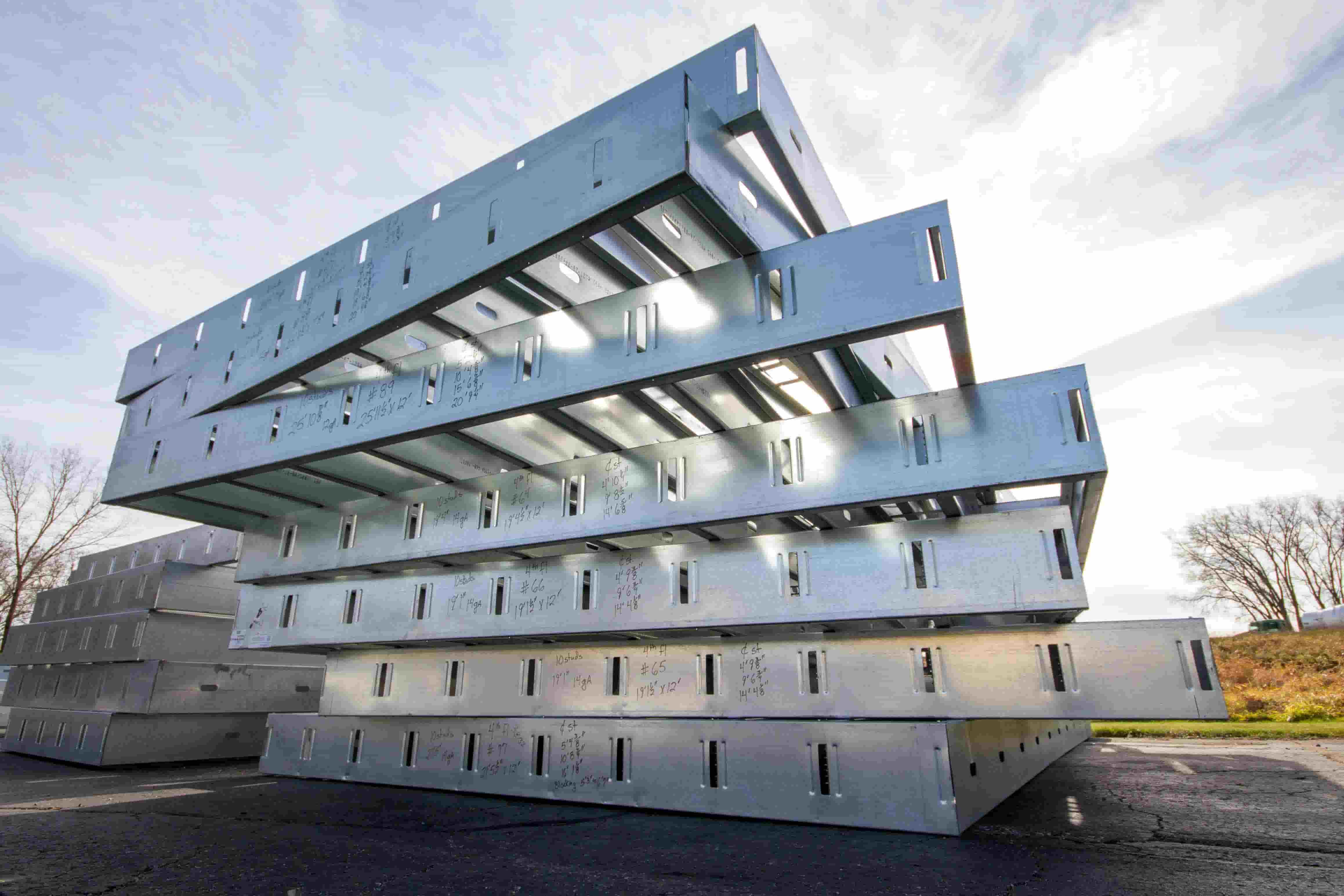
The future of construction is constantly evolving, with new technologies and materials being developed to improve efficiency, durability, and sustainability. One such innovation is the use of cold-formed steel floor systems, which offer a range of advantages over traditional construction methods.
Cold-formed steel (CFS) refers to steel products that are shaped by bending or forming at ambient temperatures. These products are used in a variety of applications, including walls, roofs, and floors. In recent years, there has been a growing interest in using cold-formed steel floor systems due to their numerous benefits.
First and foremost, cold-formed steel floor systems are lightweight yet incredibly strong. Unlike traditional concrete or wood floor systems, which can be heavy and cumbersome, CFS floor systems are made from thin and lightweight steel sheets. This makes them much easier to handle and install, reducing labor costs and construction time. Despite their lightweight nature, CFS floor systems have excellent load-bearing capacity and can support heavy loads, making them ideal for a wide range of buildings.
Another advantage of cold-formed steel floor systems is their durability. Steel is inherently resistant to rot, mold, and pests, which are common problems associated with wood-based floor systems. This means that CFS floor systems have a longer lifespan and require less maintenance and repairs over time. Additionally, steel is non-combustible, making CFS floor systems highly fire-resistant and improving the overall safety of the building.
Furthermore, cold-formed steel floor systems are highly customizable and can be designed to fit specific project requirements. Steel sheets can be easily cut and formed into various shapes and sizes, allowing for greater design flexibility. This makes CFS floor systems suitable for complex architectural designs and can help architects and engineers bring their creative visions to life.
The use of cold-formed steel floor systems also has a positive environmental impact. Steel is a highly recyclable material, and using CFS floor systems reduces waste and promotes sustainability. Additionally, the lightweight nature of CFS floor systems means that less energy is required for transportation and installation, further reducing the carbon footprint associated with construction.
In terms of cost, cold-formed steel floor systems can be a more economical choice compared to traditional construction methods. The lightweight materials and modular design of CFS floor systems reduce labor and transportation costs, making them a cost-effective option for builders. Additionally, the durability and low maintenance requirements of CFS floor systems result in long-term cost savings for building owners.
Lastly, cold-formed steel floor systems offer better performance in terms of acoustics. Steel is known for its excellent sound insulation properties, which can help reduce noise transmission between floors. This is particularly beneficial in commercial buildings, apartments, and hotels where noise reduction is essential for the comfort and well-being of occupants.
In conclusion, cold-formed steel floor systems have a bright future in the construction industry. Their lightweight yet strong nature, durability, customization options, and environmental benefits make them an attractive choice for builders and architects. With advancements in technology and design, cold-formed steel floor systems will continue to revolutionize the way buildings are constructed, offering improved efficiency, sustainability, and overall quality.